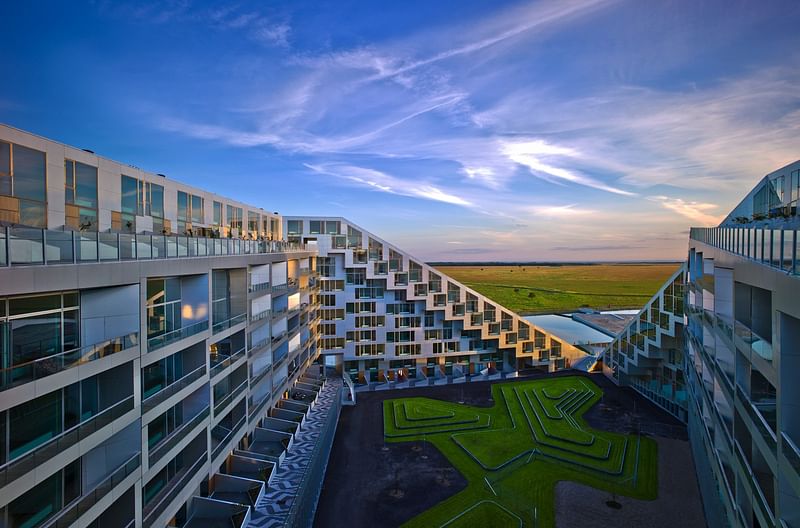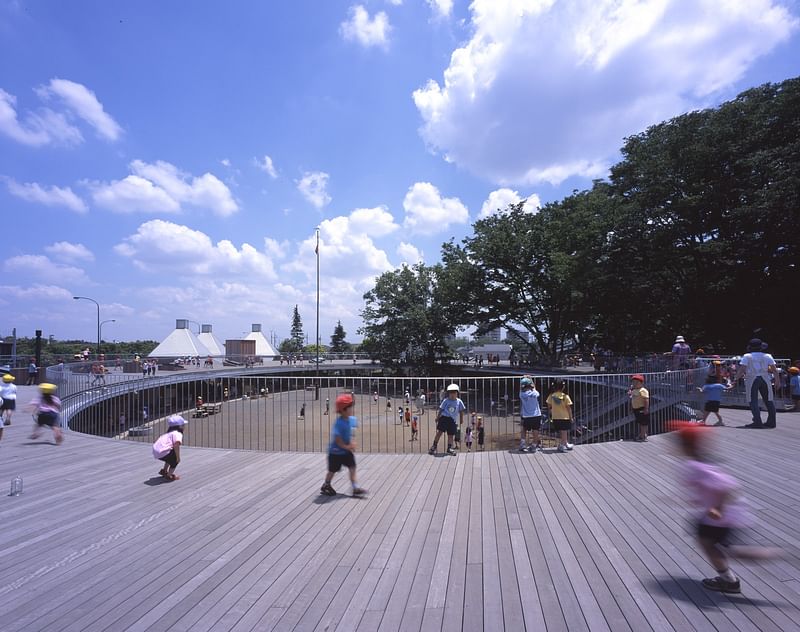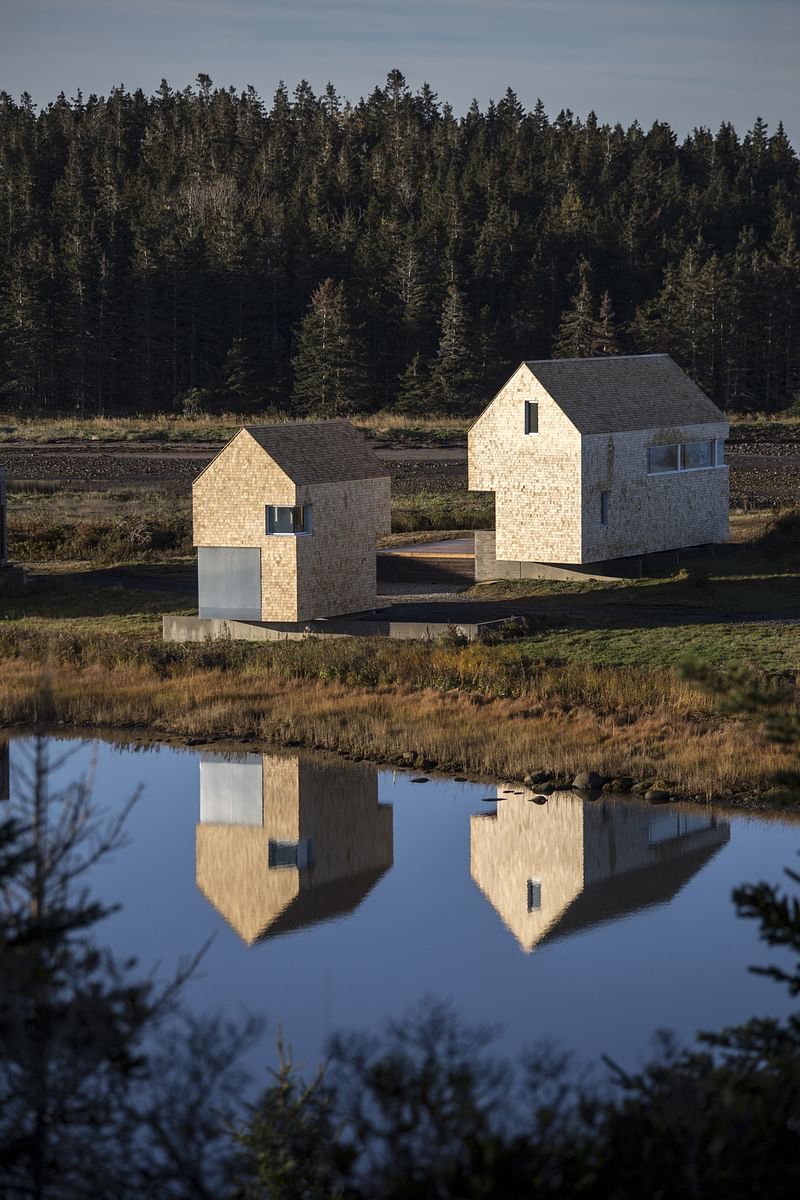Four projects shortlisted for 2017 Moriyama RAIC Prize
By Justine Testado|
Thursday, May 25, 2017

Related
It's down to the final four for the 2017 Moriyama RAIC Prize. Established in 2014 by notable Canadian architect Raymond Moriyama along with the RAIC and the RAIC Foundation, the CAD$100,000 prize celebrates a single architectural project that is “transformative within its social context” and deemed exemplary of positively impactful and inclusive design. The prize also includes a sculpture by Canadian designer Wei Yew. Li Xiaodong won the inaugural Moriyama Prize for his stunning Liyuan Library.
“The Prize is aimed at encouraging architects to be service-oriented rather than just focusing on producing something that looks good in magazines,” says Raymond Moriyama. “It’s to serve the community and humanity.”
The 2017 shortlisted projects were designed by the likes of BIG, Tezuka Architects, John Wardle Architects and NADAAA, and MacKay-Lyons Sweetapple Architects. Who will take home the prize? We'll have to wait until the announcement on September 19, during the RAIC’s gala event at The Carlu in Toronto.
Here are the four shortlisted projects.
8 House, Copenhagen, Denmark
BIG (Bjarke Ingels Group)
Date of occupancy: 2010

Project description: “8 House is a mixed-use residential building located in the neighborhood of Ørestad South, outside of Copenhagen, situated beside a canal with views of the Kalvebod Fælled fields. With 475 units that vary in size and layout, the building meets the needs of people in all of life’s stages: young and old, families and single people, growing and shrinking households. Within the 61,994-square-meter building, the tranquility of suburban life goes hand-in-hand with the energy of a big city. Common areas and facilities are linked by a universally accessible sidewalk that functions as a major artery connecting each of the residential units with the urban fabric, including offices, a kindergarten, and a café, on the ground floor. The structure’s bow shape allows apartments to benefit from natural light, air, and exterior views. Instead of providing car parking, 8 House prioritizes ease of access to public transit and bike paths.”
Fuji Kindergarten, Tokyo, Japan
Tezuka Architects
Date of occupancy: 2007

Project description: “Fuji Kindergarten is a one-story, oval-shaped kindergarten that accommodates over 600 children running around its open-air roof. Some children run more than six kilometers a day. The building complements the educational philosophy that children flourish in an open, free, and natural environment with a strong sense of community. The architectural spaces were designed at the scale of a child, creating a close relationship between the ground and rooftop levels. Three Zelkova trees grow through the structure for children to climb on. Between April and November, the sliding doors are open. There are no clear boundaries between classrooms; boxes used as furniture and 1.8-meter-tall panels indicate different areas. The principal reports that the school’s approach encourages calmness and focus, including in children with behavioral disorders. ‘We want the children raised here to grow into people who do not exclude anything or anyone,‘ say the architects.”
Melbourne School of Design, University of Melbourne, Melbourne, Australia
John Wardle Architects and NADAAA
Date of occupancy: 2014

RELATED NEWS Get a glimpse of the new Melbourne School of Design by John Wardle Architects + NADAAA

Project description: “The Melbourne School of Design embraces the emerging notion that the studio is not only a room or space, but a way of learning that favors the acts of doing, making, and problem solving in a critical yet collaborative environment. In this definition, the entire building has become the studio. The structure continues a sequence of outdoor rooms arrayed across the campus through a Piranesian lacing of pathways with unusually wide corridors, which provide workspaces and the opportunity for students to be exposed to each other’s work. As an architectural school, the building is active in the education of its occupants and visitors through its clarity of materials, tectonics, and organization. It addresses the use of resources, challenges conventional means and methods of project delivery, and considers its own life-cycle implications as a building. The Melbourne School of Design has become a place where anyone can come to learn about design, education, and sustainability.”
The Village Architect Shobac Campus, Upper Kingsburg, Nova Scotia, Canada
MacKay-Lyons Sweetapple Architects
Date of occupancy: 1994–ongoing

RELATED NEWS Brian MacKay-Lyons wins the RAIC 2015 Gold Medal

Project description: “In 35 years of practice, Brian MacKay-Lyons, ‘the village architect,’ has built more than 40 houses in the Kingsburg community. Shobac Campus has formed over 25 years in Upper Kingsburg, along the Nova Scotia coastline. With the help of friends, neighbors, and colleagues, MacKay-Lyons cleared the forest, revealing historic ruins and uncovering 400 years of agrarian history. In 1994, he gathered a group of architecture students for a two-week event with the aim of reconnecting with the master-builder tradition and focusing on the timeless values of landscape, building, and community. They erected the first structure, mirroring an archetypal farmhouse. This became a tradition that continued for 12 successive years, resulting in the addition of new structures. What began as a design/build laboratory has evolved into a place for community events, a school, and a studio for local building practice. Integrating practice and teaching, family and community, Shobac Campus is an argument for landscape stewardship through agricultural and architectural cultivation.”
RELATED COMPETITION 2017 Moriyama RAIC International Prize

RELATED NEWS Li Xiaodong's Liyuan Library wins inaugural Moriyama RAIC International Prize


Share
0 Comments
Comment as :